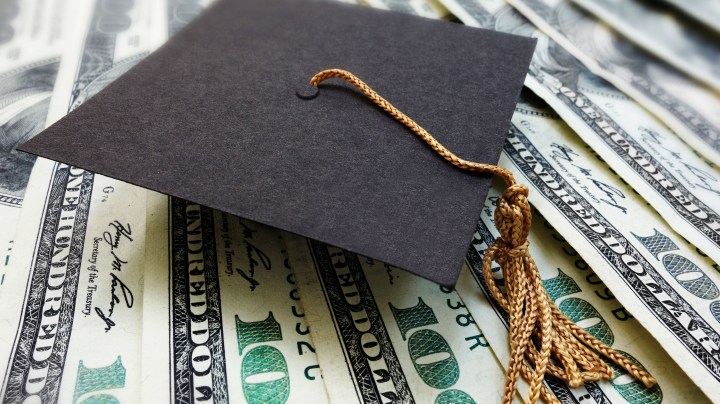
The Biden administration is forgiving $39 billion in federal student loans. Find out if you qualify
Share Now on:
The Biden administration is forgiving $39 billion in federal student loans. Find out if you qualify

More than 800,000 U.S. borrowers will have $39 billion in federal student loans forgiven over the next few weeks, according to a Friday announcement from the U.S. Department of Education.
The move is part of the administration’s efforts to accurately count the number of monthly payments borrowers have made under income-driven repayment plans, which forgive borrowers’ loan balances after they’ve made either 240 or 300 qualifying payments. This amounts to 20 or 25 years worth of payments, respectively.
Income-driven repayment plans are designed to make payments more affordable for borrowers because they’re based on a percentage of your income.
“For far too long, borrowers fell through the cracks of a broken system that failed to keep accurate track of their progress towards forgiveness,” said U.S. Secretary of Education Miguel Cardona in a statement on the Department of Education’s website.
The news follows a previous announcement from the Department of Education in 2022 that stated it would address issues with federal student loan programs.
A 2021 report from the National Consumer Law Center said that about 2 million federal student loan borrowers had been in repayment for more than 20 years, but only 32 borrowers had their loans canceled through IDR plans.
The Department of Education said that eligible borrowers should be receiving an email, starting today, that they qualify for forgiveness and that discharges “will begin 30 days after emails are sent.”
Eligible borrowers include those with direct loans or federal family education loans from the Department of Education, including Parent PLUS loans.
Here’s what counts toward forgiveness, according to the department’s press release:
- Any month in which borrowers made a repayment, even if that payment was partial or late
- “Any period in which a borrower spent 12 or more consecutive months in forbearance”
- “Any month in forbearance for borrowers who spent 36 or more cumulative months in forbearance”
- Any month in which borrowers deferred their payments before 2013, except if those payments were deferred while in school
- Any month in which borrowers had endured “economic hardship” or had military deferments on or after Jan. 1, 2013
While the Supreme Court struck down Biden’s student debt forgiveness plan, the Biden administration has announced it will take a series of steps to help alleviate student loan debt.
In total, Americans owe a massive $1.78 trillion in student loan debt.
The administration previously announced a plan known as SAVE, or Saving on a Valuable Education, which would reform an income-driven repayment plan known as Revised Pay as You Earn or REPAYE. Those in REPAYE will automatically be enrolled, while others who are interested will be able to sign up later this summer, according to the White House.
As part of the plan, borrowers will have a monthly bill that’s 5% of their discretionary income, compared to the current income-driven repayment plans, which require payments that are 10%, 15% or 20% of your discretionary income.
You will also not be penalized for unpaid monthly interest. Borrowers in IDR plans may have to deal with negative amortization, where your student loan balance goes up because unpaid interest gets added to it.
Loan balances for those in a SAVE plan will also be forgiven after 10 years, compared to IDR plans that put you on a 20- or 25-year payment path, and the plan raises the threshold of what constitutes non-discretionary income. In effect, no one who earns under 225% of the federal poverty level will have to make a payment.
Now that payments are restarting in October and interest will resume accruing in September, federal borrowers will also get an “on-ramp” period between Oct. 1, 2023 and Sept. 30, 2024.
Interest will still accrue, but those who miss their payments will not be “considered delinquent, reported to credit bureaus, placed in default, or referred to debt collection agencies,” according to the White House.
There’s a lot happening in the world. Through it all, Marketplace is here for you.
You rely on Marketplace to break down the world’s events and tell you how it affects you in a fact-based, approachable way. We rely on your financial support to keep making that possible.
Your donation today powers the independent journalism that you rely on. For just $5/month, you can help sustain Marketplace so we can keep reporting on the things that matter to you.


















